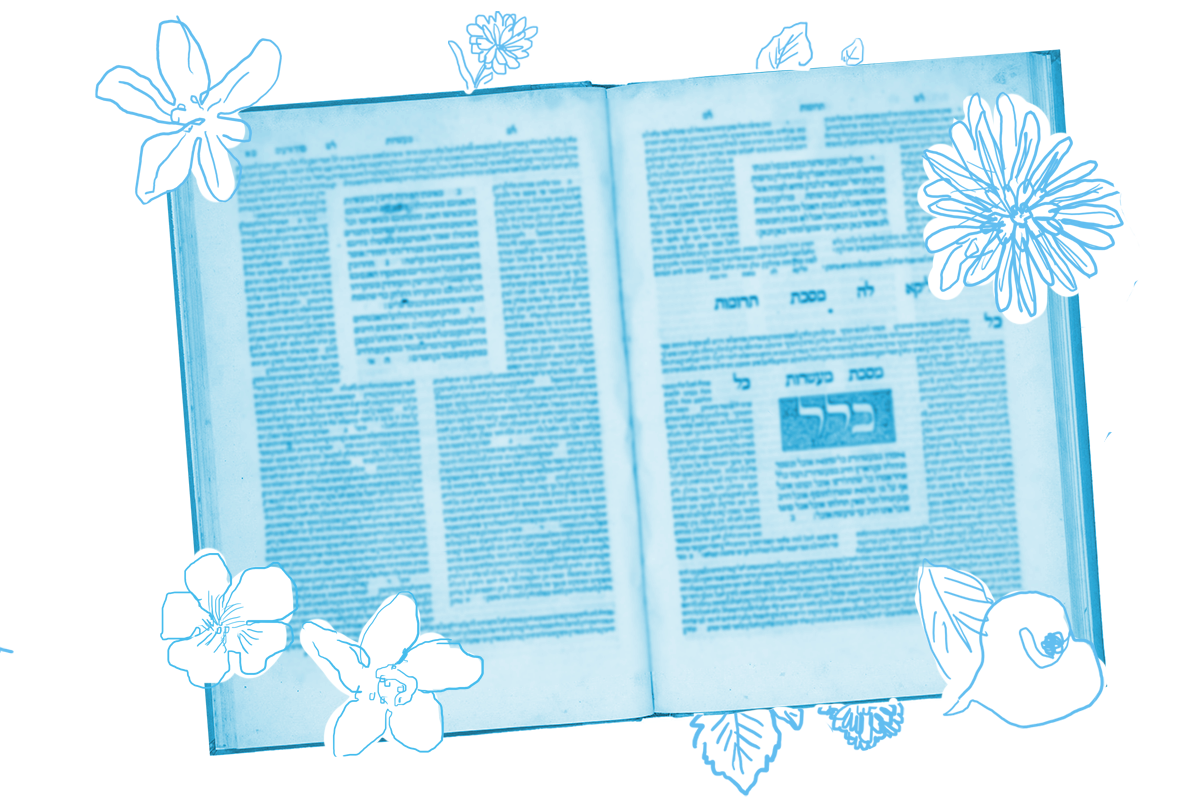With the mishnah on today’s daf, we finally arrive at a subject you probably would have expected to encounter much earlier in Tractate Yoma: the basic rules for observing Yom Kippur.
The text states:
On Yom Kippur, the day on which there is a mitzvah by Torah law to afflict oneself, it is prohibited to engage in eating and in drinking, and in bathing, and in smearing oil on one’s body, and in wearing shoes, and in conjugal relations.
The rest of the mishnah, and the Gemara discussion that follows, goes on to address the punishments for violating these laws and the specific amounts of food and drink consumption that would trigger a harsher punishment of karet (spiritual excising from God) or a more lenient rabbinic punishment of lashes. There are also exceptions for new mothers, kings and brides.
With your help, My Jewish Learning can provide endless opportunities for learning, connection and discovery.
One of these exceptions is curious:
A woman after childbirth, who is suffering, may wear shoes because going barefoot causes her pain. This is the statement of Rabbi Eliezer. The rabbis prohibit these activities [wearing shoes or washing] for a king, a new bride, and a woman after childbirth.
Why would not wearing shoes be considered an affliction? Why would Rabbi Eliezer assume that going barefoot would cause pain for a new mother and allow her to wear them? Why would the rabbis disagree? And how is it that almost everyone wears footwear today on Yom Kippur?
In considering these questions, we need to put ourselves in the shoes (or not) of a new mother living in the rabbinic period. While some might consider shoes to be prisons for the feet and take any opportunity to go barefoot, that would not have been the case throughout most of human history. Going barefoot might cause a woman in her delicate postpartum state to become ill from walking on cold ground (Rashi) or expose her to the danger of stepping on a scorpion (Maimonides). The Shulchan Aruch allows a new mother, anyone who is sick, or anyone who has a wound on their feet to wear sandals on Yom Kippur. Thus Rabbi Eliezer’s leniency, rather than the stringency of the rabbis, becomes the law.
And yet today, almost everyone wears shoes on Yom Kippur – just not leather ones. Why is this permitted?
For the answer, we need to jump ahead to Tractate Yevamot, which we will get to in our Daf Yomi cycle just about one year from now. There, the Gemara is discussing halitzah, the ceremony releasing a man from the biblical requirement, described in Deuteronomy 25:5-10, to marry his dead brother’s childless widow and raise their offspring in his brother’s name. In this process, the widow makes a declaration, removes her brother-in-law’s shoe from his foot, and spits on the floor. (You may not have learned about this in Hebrew school.) The Gemara then spends some time discussing the definition of a shoe. According to the rabbis, only footwear made of leather are considered actual shoes.
This is why, as we will see in a few days, even the rabbis of the Talmud wore cloth foot coverings on Yom Kippur. And it’s why many of us today wear canvas sneakers or rubber flip-flops on the holiest day of the year.
Circling back to today’s daf, why would new mothers then be permitted to wear leather shoes when we now know that cloth is perfectly acceptable? To understand that, all we need to do is imagine what it would be like to walk to shul on Yom Kippur in the rain, on a gravel road, with cold, wet feet because we were wearing flimsy shoes. Leather offers better protection, and for a postpartum mom recovering from childbirth, her comfort and safety outweigh even the laws of Yom Kippur.
Read all of Yoma 73 on Sefaria.
This piece originally appeared in a My Jewish Learning Daf Yomi email newsletter sent on June 23rd, 2021. If you are interested in receiving the newsletter, sign up here.



